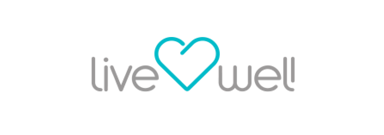Internal Recruitment
Internal recruitment is about giving your current team a shot at new opportunities before hiring someone new. It’s a way to recognize the talent you already have: people who know how things work, get the culture, and have already proven themselves. 📌
When internal recruitment is done right, both sides win. Employees get to grow, try something new, and feel like their efforts are noticed. And from the company side, you save time, money, and the complexity of bringing someone totally new up to speed. You also keep that valuable know-how in-house.
This could be promoting someone into a bigger role or moving them to a different team where their strengths fit better. It could even be bringing back a former employee. The idea is simple: taking a good look at who’s already here.
When to Use Internal Recruitment
Internal recruitment shines in specific situations where leveraging your existing talent pool brings clear advantages. 🕰️
Giving people a chance to grow from within goes a long way. It shows you actually care about their future here. When people see there’s room to move up, they’re way more likely to stick around.
It is also good if you have a tight deadline. Internal candidates can usually step into a new role faster than someone coming from the outside.
And budget is always a factor. Hiring internally costs less because of not dealing with job ads, recruiter fees, or lengthy onboarding. Plus, it helps with succession planning by developing a pipeline of talent.
Internal Recruitment vs External Recruitment
Hiring internally happens when you look at the people you already know. It’s faster, usually cheaper, and focuses on helping your current team grow. You already know how they work, whether they fit in with the team, and how they communicate. It’s a safer bet, and it usually keeps people motivated because they see there’s room to grow within the company.
Hiring externally, on the other hand, is all about getting fresh faces with new ideas and skills that might be missing from your team. This is especially useful when you’re growing quickly or need expertise you don’t have in-house yet: but it can take longer and cost more. Also, there’s always a chance that a new hire might not quite fit in with the company culture.
The smartest strategy is usually a mix of both: internal hires help reward loyalty and keep employees engaged, while external hires bring in new energy and ideas.
Types of Internal Recruitment
Promotion
Promotions are the most common kind of internal move. Basically, someone’s done a great job, and they get the chance to step into a role with more responsibility. Usually, with better pay too. It’s a strong way to recognize hard work.
When implementing promotions, transparent criteria are essential. Employees should understand what achievements and skills are required to advance. Regular performance reviews and career development discussions help identify promotion-ready talent before positions even become available.
Promotions help the company by putting people who’ve proven themselves into key roles. Plus, they give everyone else a reason to keep pushing because they see that working hard and developing new skills actually leads to moving up. The promoted employee brings valuable institutional knowledge to their new position while already understanding the company culture.
Transfer
Lateral moves happen when someone shifts to a different team or department but keeps a similar level of responsibility. They give employees the chance to explore new areas of the business, pick up different skills, and see things from another angle.
Transfers work particularly well when an employee has valuable soft skills and company knowledge but seeks new challenges or when business needs require reallocation of talent. For example, a marketing specialist might transfer to the product team, bringing valuable customer insights while learning new technical skills.
Effective transfer programs require collaboration between departments and managers. Some organizations implement internal job boards where employees can explore opportunities across the company. Others create formal rotation programs, especially for early-career employees seeking to build diverse experience.
Employee Referrals
Employee referrals are like tapping into your team’s personal network to find new talent. Basically, your employees suggest people they know: whether it’s past colleagues, industry connections, or even friends for open positions at the company.
What’s great about this is that your team already knows what the job requires and how the company works. They’re more likely to recommend people who’ll actually fit in well. Plus, they won’t usually refer someone who could reflect badly on them, which means you’re getting candidates who are more likely to work out.
Many companies appeal to successful referrals by offering things like cash bonuses, extra time off, or even a little public recognition. The important part is making sure everyone knows exactly how the program works and what they can earn.
The best referral programs make it very easy for employees to refer people. Think simple ways to submit referrals and regular updates on which jobs are available. Some companies even give employees job descriptions and tips on how to reach out to potential candidates.
Former Employees (Boomerang Hiring)
Rehiring former employees can be a really smart hiring decision. These are people who already understand your culture and how your team works, so they usually settle in faster than a brand-new hire.
But what makes them especially fit is the experience they’ve gained while they were away. They come back with fresh insights, new skills, and a different perspective: and that mix of familiarity and growth can be a real asset.
To facilitate boomerang hiring, maintain positive relationships with high-performing employees who leave. Exit interviews should focus not only on reasons for departure but also on possible conditions for return. Some organizations create alumni networks to stay connected with former talent.
When bringing back former employees, it’s key to understand why they left and why they want to return. Their reasons for coming back should really meet your company’s values and goals.
Process of Internal Recruitment
1. Identifying Needs and Creating Job Descriptions
When you're opening up a role internally, get very clear on what the job actually is. Think about what the person will be doing day to day, what kind of skills and experience they’ll need, and what “doing well” in the role really looks like.
But, this isn’t news to your internal team. They already know how the company works. What they want to know is how this role is different from what they’re doing now. What’s new, what’s challenging, and what’s expected of them?
Check in with the person who’s currently in the role or the one who’s moving out of it. They’ll give you the honest version of what the job is really like, not just the bullet points. And that helps everyone go into the process with eyes wide open, which is better for everyone in the long run.
2. Announcing Opportunities
Share internal openings clearly and consistently whether that's through a job board, the intranet, a quick note in a team meeting, or a simple email update. It is important to make sure everyone knows where to look and feels included in the process.
Some companies follow a “post-before-hire” policy. This means most roles have to be shared internally for a certain amount of time before they start looking outside the company. This lets all qualified employees to have the opportunity to express interest.
When you’re announcing a new role, spell out how people can apply, what the steps and timeline look like. Mention why the position is available. Giving this context helps candidates understand not just the role, but the bigger picture too.
3. Screening and Selection
When you’re looking at someone for an internal role, don’t just skim through their resume and leave it there. Take a real look at how they’ve been performing. Check out their reviews, any skills tests they’ve done, and what their manager has said.
Treat the interview seriously, too. Just because someone already works at the company doesn’t mean you skip the structure. Ask thoughtful questions that dig into both what they can do now and where they have room to grow. And it’s important to keep things fair: try not to let friendships or office reputation steer your judgment.
It also helps to get more than one point of view. Loop in the hiring manager, maybe a future teammate, and if it makes sense, someone from leadership. Getting input from different people not only leads to better decisions, it also helps avoid any sense of favoritism.
And if someone internal doesn’t get the job? Don’t leave them hanging. Give honest, supportive feedback. Let them know what went well and where they can grow. It shows you respect them and want to help them keep moving forward, even if this role wasn’t the one.
4. Transition Planning
Once an internal candidate is selected, create a comprehensive transition plan. This should include knowledge transfer from their current role, training for new responsibilities, and clear communication with both their former and new teams.
Work out a timeline that feels right for both teams. In some cases, the employee might spend some time doing both roles while they transition. In others, a clean break may be more appropriate with sufficient handover documentation.
Be upfront about what success looks like in the new role. Internal hires might have a slightly different experience than someone new to the company.
One big challenge? Navigating new dynamics with former teammates who might now report to them. That shift can be tricky, so setting expectations early helps everyone get on the same page and feel more confident moving forward.
5. Follow-up and Support
After the transition, schedule regular check-ins with both the employee and affected departments. These conversations help identify any challenges that need addressing and confirm that the internal move is meeting expectations.
Provide necessary support resources, which might include mentoring, specific skills training, or coaching on new aspects of the role. Remember that even experienced employees may need guidance when taking on significantly different responsibilities.
Document successes and challenges from each internal recruitment process to continuously improve your approach. Over time, patterns may emerge that help refine your internal mobility programs and policies.
Conclusion
The best companies treat internal hiring as part of a bigger picture. They give people the chance to grow, have real conversations about where they want to go in their careers, and are upfront about what they need to do to get there.
It works best when internal hiring is balanced with bringing in some fresh talent. New hires from outside bring fresh ideas and skills, while internal candidates already know the ropes and the company culture. 🚀
Get a demo
- Quickly find top candidates with smart application management
- Improve team collaboration using built-in communication and workflows
- Offer a smooth candidate experience to strengthen your employer brand
- Count on 24/7 support for a hassle-free hiring process
- Quickly find top candidates with smart application management
- Improve team collaboration using built-in communication and workflows
- Offer a smooth candidate experience to strengthen your employer brand
- Count on 24/7 support for a hassle-free hiring process
"We truly felt the speed difference. Everything was smoother, and candidate feedback was much more positive. It made our jobs easier."

Trusted by 100+ teams
Get Informed,F.A.Q.
Revolutionize your hiring process with our transformative Applicant Tracking System (ATS.)
Suggested keywords
What is Cultural Fit?
Let's talk numbers - 89% of employers put cultural fit at the top of their hiring checklist. Pretty huge. But wait a second... what exactly does cultural fit mean in today's fast-moving workplace?The ...
Employee NPS Benchmarks
An Employee NPS benchmark is basically a way to see how your company’s employee satisfaction stacks up against others. It helps turn your eNPS score into something useful by giving it context. 📌You'r...
Salary Benchmarking
Salary benchmarking is basically figuring out if what you're paying your team makes sense compared to what others are offering for similar roles. It’s like checking the going rate before you buy somet...















